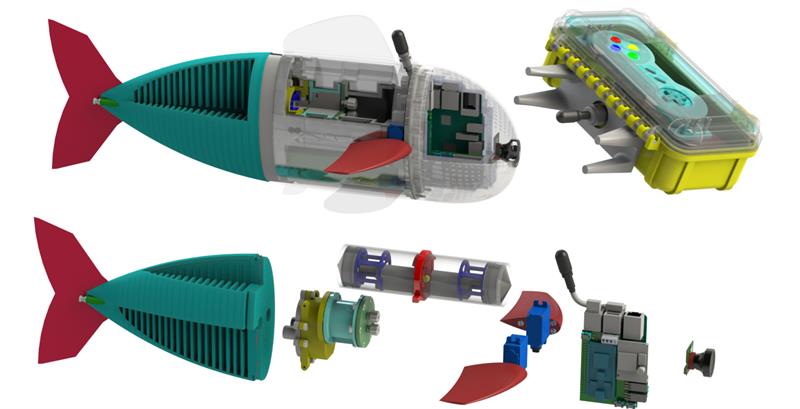‘SoFi’ is a soft robotic fish that can independently swim alongside real fish at depths of more than 15 metres for up to 40 minutes at a time, taking high-resolution photos and videos using a fisheye lens.
Its undulating tail and unique ability to control its own buoyancy means that SoFi can swim in a straight line, turn, or dive up or down. The team uses a waterproofed Super Nintendo controller and have developed a custom acoustic communications system that enables them to change SoFi’s speed and have it make specific moves and turns.
“To our knowledge, this is the first robotic fish that can swim untethered in three dimensions for extended periods of time,” said Robert Katzschmann, lead scientist in the CSAIL team. “We are excited about the possibility of being able to use a system like this to get closer to marine life than humans can get on their own.”
Existing autonomous underwater vehicles (AUVs) have traditionally been tethered to boats or powered by bulky and expensive propellers.

In contrast, SoFi has a much simpler and more lightweight setup, with a single camera, a motor, and a lithium polymer battery that’s found in smartphones. To make the robot swim, the motor pumps water into two balloon-like chambers in the fish’s tail that operate like a set of pistons in an engine.
These alternating actions create a side-to-side motion that mimics the movement of a real fish. By changing its flow patterns, the hydraulic system enables different tail manoeuvres that result in a range of swimming speeds, with an average speed of about half a body length per second.
The back half of the fish is made of silicone rubber and flexible plastic, and several components are 3D printed, including the head, which holds the electronics.
Indeed, one of the team’s biggest challenges was to get SoFi to swim at different depths. The robot has two fins on its side that adjust the pitch of the fish for up and down diving. To adjust its position vertically, the robot has an adjustable weight compartment and a ‘buoyancy control unit’ that can change its density by compressing and decompressing air.
Next, team will work on several improvements, including plans to increase the robot’s speed by improving the pump system and tweaking the design of its body and tail.
Katzschmann says that they also plan to use the on-board camera to enable SoFi to automatically follow real fish, and to build additional SoFis for biologists to study how fish respond to different changes in their environment.
“We view SoFi as a first step toward developing almost an underwater observatory of sorts,” says CSAIL director Daniela Rus. “It has the potential to be a new type of tool for ocean exploration and to open up new avenues for uncovering the mysteries of marine life.”
